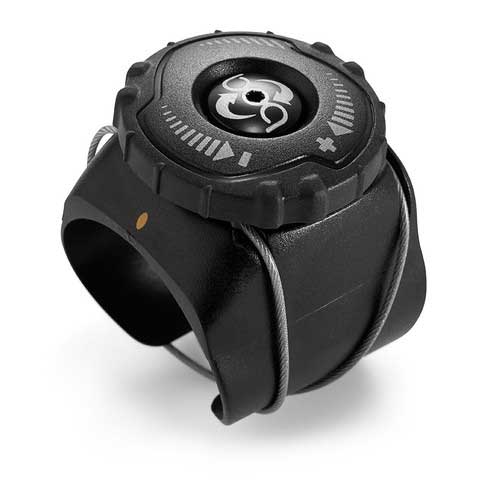Claude Lakey Seeks to Break New Ground with “Compass” Ligature
 Introduction
Introduction
After having a chance to compare the Claude Lakey Compass ligature to my current setup (Marc Jean ligature) at the 2015 NAMM Show, I asked John Morrison, president of Claude Lakey, if I could spend some more time test-playing this ligature to see how it compares to other ligatures I have played in the past. John was nice enough to send me one to compare and get my overall feedback.
Review
The Claude Lakey Compass ligature comes with a tenor, alto/clarinet, and soprano mouthpiece cap, as well as foam insert pads if you decide that the ligature is a bit loose for your current setup and would prefer a tighter fit. I applied the foam inserts to find out how it would fit my hard rubber Otto Link mouthpiece. I discovered that (as mentioned in the instructions) the ligature was initially a bit difficult to put on or remove from my mouthpiece, but after using it a few times, the foam pads started to form to my mouthpiece. Overall, I discovered that I simply preferred the ligature as is without the foam inserts.
When developing the Compass ligature, Claude Lakey decided to team up with innovative manufacturer for the sports and medical industry, BOA Technology due to BOA’s patented reel-based adjustment system. What Claude Lakey discovered while working with BOA was they were able to design a ligature that provided more uniform pressure around the mouthpiece and enabled 30% more volume with less effort required.
What’s nice about the Compass is that it comes with a lifetime warranty in case of any sort of malfunction. When I compared the Compass ligature to my Marc Jean, Francois Louis, Vandoren M/O, and RW ligatures, I noticed that they all were a bit different in how the reed responded. I found the Compass Ligature to be the most neutral of these ligatures when comparing it to the overall sound. And in comparison to my stock ligature, the Compass simply required less air and produced a bigger sound. I recommend putting the Compass Ligature on the mouthpiece first and then placing the reed in between the mouthpiece and ligature when making adjustments, which is easy to do with the adjustment knob at the bottom of the ligature.
Overall Thoughts
I found the Claude Lakey Compass Ligature to be very durable and am excited that Claude Lakey stands behind their ligature with a lifetime warranty. When looking further into the price of this ligature, I found it sold for around $40. At this price point, anyone from a student to professional can afford a quality ligature which will fit on most alto, tenor, soprano and clarinet mouthpieces.
I would like to thank John again for sending me the Compass Ligature, and would appreciate any feedback or comments in regards to your experience trying out the Compass ligature by Claude Lakey.





